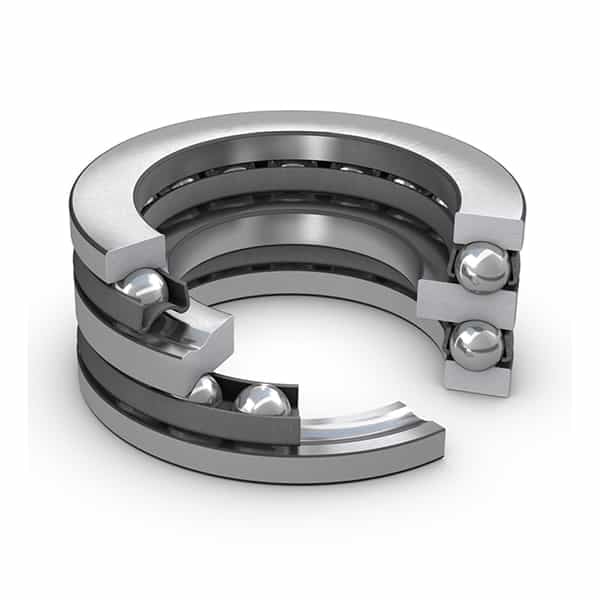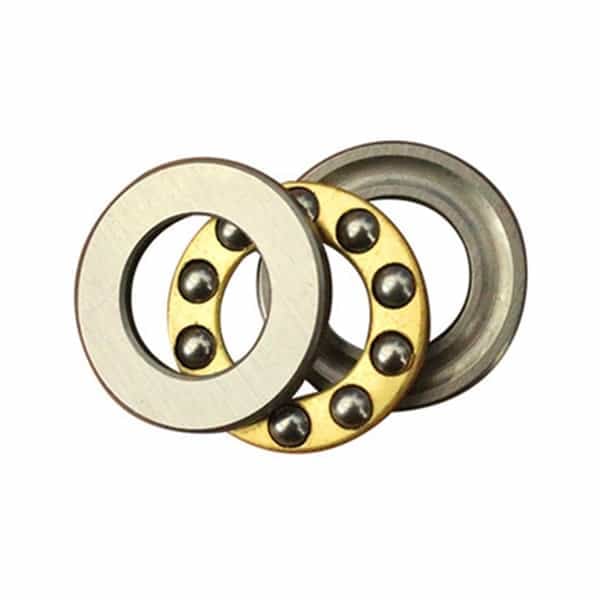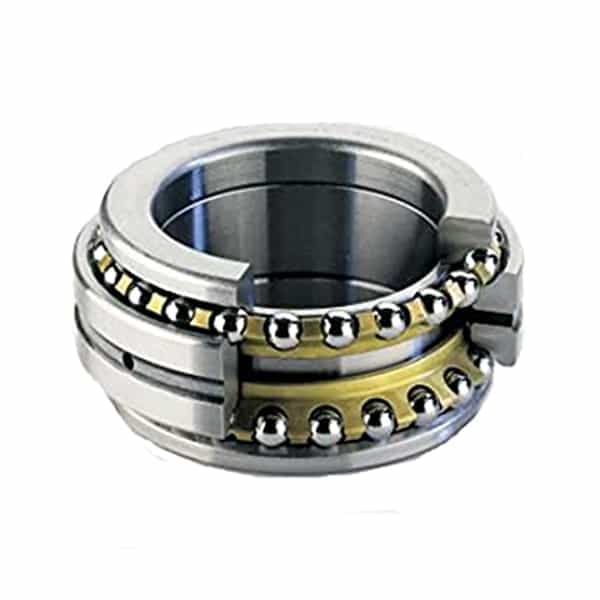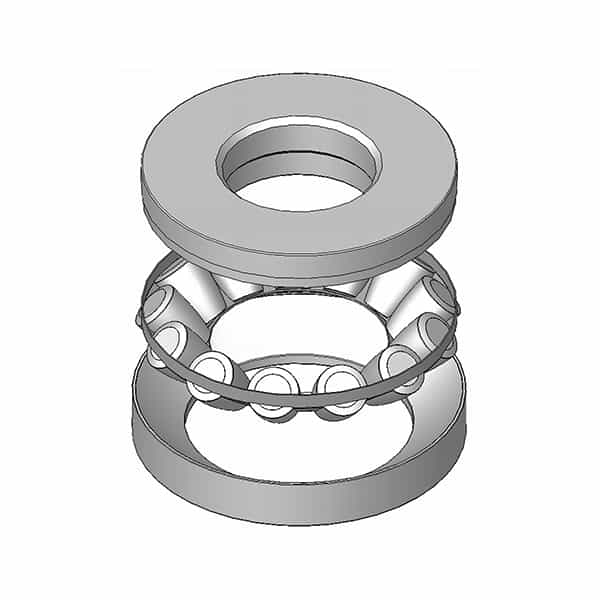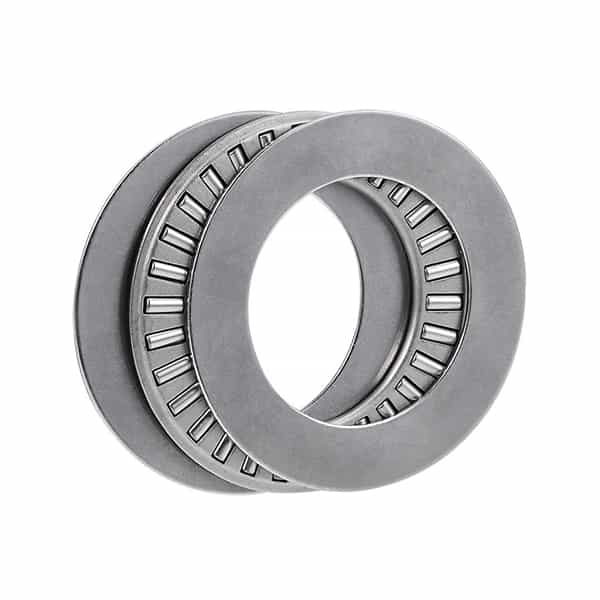What is a Thrust Bearing?
Thrust bearings play a pivotal role in the industrial sector, managing axial loads while ensuring efficient, smooth operation across diverse applications. This in-depth exploration provides a comprehensive understanding of what is a thrust bearing, focusing on its core mechanics, distinct design types, and significant roles in various industries.
Understanding Thrust Bearings
Thrust bearings, essentially, are tailor-made to handle axial loads, forces acting parallel to the rotational axis, underpinning rotational motion under significant axial stress. Their ability to manage high axial loads and operate at low-to-moderate speeds is their key differentiation from radial bearings, which are designed to handle forces perpendicular to the axis.
Types of Thrust Bearings
Ball Thrust Bearings
Primarily designed to handle lighter loads, ball thrust bearings are commonly used in applications like bar stools and turntables, where the axial force dominates and radial load is negligible. Ball thrust bearings are categorized mainly by their design and the type of loads they can handle. Here are the primary categories:
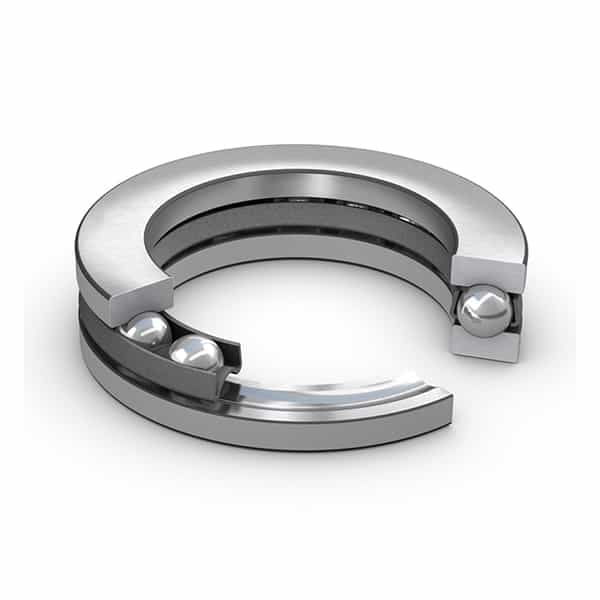
Single Direction Thrust Ball Bearings:
These bearings can handle axial loads in one direction only. They cannot handle any radial load. They consist of two rings, with the balls arranged in a single row.
Double Direction Thrust Ball Bearings:
They can manage axial loads in both directions. They have two rows of balls with a central washer between them, and two raceways in the housing washer. They cannot handle any radial load, either.
Miniature Thrust Ball Bearings:
They effectively manage light axial loads. They're commonly utilized in compact motors and precision devices due to their stable and reliable performance.
Angular Contact Ball Thrust Bearings:
With their specified contact angle, these bearings handle combined axial and radial loads. The contact angle size directly influences load capacities - larger angles increase axial capacity while reducing radial capacity, and vice versa.
The above thrust ball bearings can be made from different materials, such as Ceramic Thrust Ball Bearings, Stainless Steel Thrust Ball Bearings, etc.
Roller Thrust Bearings
Roller thrust bearings, using cylindrical rollers, are designed for heavy thrust, axial loads, and are unsuited for radial loads. They are commonly used in high-speed applications like heavy machinery, gear sets, and turbines.
Spherical Roller Thrust Bearings:
They use barrel-shaped rollers to handle axial, radial loads and misalignment, making them suitable for heavy-duty equipment.
Needle roller thrust bearings:
Appreciated for their compact design, these bearings may directly interact with rotating parts, handling high axial and shock loads but not radial loads.
Tapered Roller Thrust Bearings
 Tapered roller thrust bearings:
Tapered roller thrust bearings:
These bearings are frequently used in automotive applications, support higher thrust loads than ball bearings due to a larger contact area and can accommodate combined radial and axial loads.
Working Principles of Thrust Bearings
Thrust bearings manage axial loads through rolling motion, governed by their contact angle. Smaller angles enhance axial capacity at the expense of radial capacity, and vice versa. Optimal bearing performance balances axial capacity and longevity, making contact angle and load distribution integral to its functionality and use.
Applications of Thrust Bearings
The versatility of thrust bearings allows for widespread applications across multiple industries.
Automotive Industry
In the automotive sector, thrust bearings are crucial in transmissions and differential systems. They manage axial forces efficiently, ensuring smooth operation and reducing wear and tear on critical components.
Industrial Machinery
Thrust bearings find wide application in heavy machinery and equipment, managing high axial loads and ensuring seamless operation under considerable stress.
Aerospace Industry
In the aerospace sector, thrust bearings are essential components in aircraft engines and control systems. They manage enormous axial forces, operate seamlessly at high speeds, and resist harsh environmental conditions, making them ideal for high-precision applications.
Factors to Consider When Selecting Thrust Bearings
When selecting thrust bearings, consider the following: Load Capacity and Speed Ratings: Ensure the bearing can handle the maximum axial load without excessive wear or failure, and operates within the required speed range. Too much load or speed can lead to premature failure.
Lubrication and Maintenance Requirements: Choose the appropriate lubrication (grease or oil) based on speed, temperature, and environment. Regular maintenance, including inspections and timely replacements, prolongs bearing lifespan and performance.
Installation and Maintenance Tips for Thrust Bearings
The optimal performance and lifespan of thrust bearings greatly depend on proper installation and regular maintenance. Here are some tips to ensure that your thrust bearings function as intended:
- Installation of Thrust Bearings: Careful Handling: Prevent damage by handling bearings gently, avoiding contact with rolling elements.
- Correct Alignment: Ensure bearings are properly aligned to avoid uneven load distribution and rapid wear.
- Appropriate Tools: Use specialized tools for installation to prevent bearing damage.
-
Maintain Cleanliness: Keep workspace and components clean to minimize contamination.
Maintenance Tips:
- Consistent Lubrication: Maintain regular lubrication to extend bearing longevity.
- Frequent Inspections: Regularly check bearings for signs of wear or damage for early issue detection.
- Replacement: Don't hesitate to replace bearings showing significant wear or damage to avoid larger issues.
Common Challenges and Troubleshooting
Thrust bearings can face numerous challenges in operation, including misalignment, excessive heat, insufficient lubrication, contamination, fatigue failure, overloading, improper installation, wear and tear, corrosion, and noise or vibration. Here’s how to identify and address these common issues:
- Misalignment: Improper alignment can lead to uneven load distribution and premature wear. Regular inspections and maintenance can ensure proper alignment and prevent this issue.
- Excessive heat: High operating temperatures can degrade the lubricant and reduce bearing performance. Employing suitable lubricants and proper cooling mechanisms can mitigate this problem.
- Insufficient lubrication: Inadequate lubrication can result in increased friction, heat, and wear. Regular lubrication according to the manufacturer's specifications can help prevent this issue.
- Contamination: Dust, dirt, and debris can enter the bearing and hinder its smooth operation. Employing suitable seals or shields can prevent contamination.
- Fatigue failure: Continuous cycling of heavy loads can cause fatigue and eventual failure of the bearing. Regular inspections and replacing bearings at recommended intervals can mitigate this problem.
- Overloading: Exceeding the maximum load capacity of the bearing can lead to premature failure. It's essential to select a bearing that suits the load requirements of the application.
- Improper installation: Incorrect installation techniques can cause stress on the bearing and compromise its performance. Following the correct installation procedures can prevent this issue.
- Wear and tear: Regular usage can result in gradual wear of bearing components, affecting their functionality. Regular inspections, lubrication, and timely replacement can help manage wear and tear.
- Corrosion: Exposure to corrosive substances or environments can deteriorate the bearing's surfaces and compromise its integrity. Using corrosion-resistant materials and protective coatings can help prevent this issue.
- Vibration and noise: Excessive vibration or unusual noise during operation can indicate potential bearing issues. Regular monitoring of vibration and noise levels can help detect problems early and take corrective actions.
Conclusion
Thrust bearings play a vital role in supporting high axial loads across diverse applications, from the automotive industry to aerospace and industrial machinery. Their efficient operation ensures smooth, frictionless motion, underlining the importance of correct selection, proper installation, and regular maintenance. As we continue to innovate and improve these essential mechanical components, thrust bearings will undoubtedly remain crucial in an array of applications, making our machines run more efficiently, reliably, and durably.
Keep Learning



